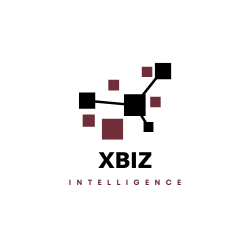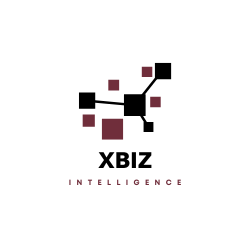

XbizIntelligence News
Your Trusted Source for the lastest Technology & Data News

🎥 Watch Now on YouTube
Data Analytics in 2025: Trends and Tools You Need to Know
Data Analytics in 2025: Trends and Tools You Need to Know
Data is now the lifeblood of modern business, and analytics has become a core function across industries. In 2025, data analytics is no longer limited to generating reports — it’s about predictive insights, real-time decision-making, and AI-driven intelligence.
This article explores key trends, emerging tools, and best practices for leveraging data analytics to drive business growth.
Executive Summary
Analytics in 2025 is shaped by several major trends:
- AI and machine learning integration in analytics platforms
- Real-time data processing for instant insights
- Self-service analytics empowering non-technical users
- Enhanced data governance and privacy compliance
By embracing these trends, organizations can convert raw data into actionable insights faster, improve operational efficiency, and make smarter strategic decisions.
Content Guide
- Introduction
- AI-Powered Analytics
- Real-Time Data and Streaming
- Self-Service Analytics Platforms
- Data Governance and Privacy
- Top Analytics Tools in 2025
- Case Study: Retail Analytics Success
- Future Outlook
- Conclusion
- CTA: Subscribe for Analytics Insights
- Next Reads
Introduction
Organizations generate vast amounts of data daily — from customer interactions and transactions to operational metrics and IoT signals. Data analytics has evolved from static dashboards to dynamic, AI-driven decision engines.
Internal Link: Business Intelligence 2.0: From Dashboards to Predictive Insights
AI-Powered Analytics
Artificial intelligence is now embedded within analytics platforms, enabling predictive and prescriptive insights.
Key developments:
- AI-driven anomaly detection
- Forecasting using machine learning models
- Natural language query interfaces for business users
Platforms like Power BI, Tableau, and ThoughtSpot integrate AI to help users explore data, generate visualizations, and receive automated insights.
External Link: Gartner Analytics & BI Report
Real-Time Data and Streaming
Real-time analytics allows organizations to act instantly on live data.
Technologies driving this include:
- Apache Kafka for streaming pipelines
- AWS Kinesis for real-time ingestion
- Event-driven architectures for immediate response
Retail, logistics, and finance sectors benefit most, where real-time insights improve customer experiences and operational efficiency.
Internal Link: Data Visualization Innovations: Tableau, Power BI, and Beyond
Self-Service Analytics Platforms
Self-service analytics empowers business users to explore data independently.
- Tools like Tableau, Power BI, Qlik Sense allow drag-and-drop dashboards
- Enables faster decision-making without IT bottlenecks
- Promotes a data-driven culture across organizations
While IT still governs data access, self-service platforms reduce dependency and improve agility.
Data Governance and Privacy
With increasing regulatory scrutiny, data governance and privacy are critical.
Key trends:
- Automated data lineage tracking
- GDPR, CCPA, and other compliance automation
- Role-based access controls to protect sensitive data
Governance frameworks ensure analytics insights are accurate, secure, and auditable.
External Link: Forrester Data Governance Insights
Top Analytics Tools in 2025
Some of the most influential tools include:
- Tableau & Power BI – Visualization and dashboards
- Looker – Cloud-based business intelligence
- Snowflake – Data warehousing and analytics
- Databricks – Unified analytics and ML
- Alteryx – Self-service data prep and analytics
These tools integrate AI, cloud computing, and real-time processing to drive modern analytics strategies.
Case Study: Retail Analytics Success
A global retailer implemented real-time analytics dashboards using Snowflake and Power BI.
Results:
- 20% increase in sales from targeted promotions
- 15% reduction in inventory waste
- Faster response to changing customer preferences
This demonstrates the power of AI-driven, real-time analytics combined with intuitive visualization tools.
Future Outlook
Analytics in 2025 will continue to evolve along three dimensions:
1. Hyper-automation with AI and ML integration
2. Edge analytics for IoT devices
3. Collaborative, cloud-native analytics platforms
Data literacy will become a critical skill, and organizations embracing analytics culture will gain competitive advantages.
Conclusion
Data analytics is no longer optional; it’s central to modern business strategy. By leveraging AI, real-time data, and self-service platforms, organizations can transform insights into actions and remain ahead in an increasingly data-driven world.
CTA: Subscribe for Analytics Insights
Stay informed on the latest trends, tools, and strategies in data analytics.
Subscribe for alerts from Xpert Business Intelligence
Next Reads
FAQs About SEO in 2025
What is the #1 SEO ranking factor?
Answer: Helpful, authoritative content that satisfies user intent.
Is link building still important?
Answer: Yes, but relevance and quality matter more than sheer quantity.
How often should I update content?
Answer: At least every 6–12 months to keep it accurate and competitive.
ADVERTISEMENT
Most Read
Stay in the Loop
Get the latest tech and data stories, events, and updates straight to your inbox.


Join the conversation